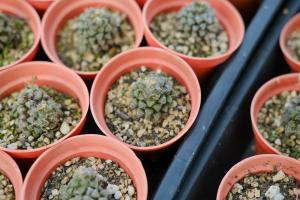Why do plants lose water through their leaves?
Plants play a crucial role in our environment by producing oxygen, providing food, and regulating the water cycle. A vital process that occurs in plants is the water loss through leaves, also known as transpiration. Transpiration is a natural process by which plants lose water from their leaves in the form of vapor. This phenomenon happens due to various reasons, and in this article, we will discuss them in detail.
Physiological reasons
One of the major reasons for water loss in plants is the physiological process that takes place in their leaves. Leaves have small pores, known as stomata, which are essential for photosynthesis. These tiny openings allow carbon dioxide to enter the leaves, while oxygen and water vapor exit. When the plant is absorbing water from the soil, water molecules are attracted to each other, and they form a continuous chain, which pulls up the water from the roots through the stem and finally to the leaves. The stomata openings allow the excess water to escape through the leaves, and this process is called transpiration. Transpiration helps to maintain the water balance in plants and prevents them from wilting.
Environmental reasons
Apart from physiological reasons, the environment also plays a significant role in plant transpiration. The amount of water vapor in the air can affect the rate of transpiration. When the air is dry, the water molecules escape from the leaves easily, and the rate of transpiration increases. In contrast, when the air is humid, the water molecules do not escape as easily, and the rate of transpiration decreases. Additionally, wind speed, temperature, and light intensity can also affect the rate of transpiration.
Benefits of transpiration
While transpiration results in the loss of water, it is a crucial process for the survival of plants. Transpiration helps to distribute nutrients throughout the plant, and it cools the leaves, preventing them from overheating. Additionally, transpiration aids in the uptake of essential nutrients from the soil and pushes them to the upper part of the plant. Without transpiration, the plant will not be able to grow correctly or live long.
Conclusion
In conclusion, transpiration, or the loss of water through plant leaves, is a natural and vital process. It occurs due to the physiological mechanisms in plant leaves and environmental factors. Although it results in the loss of water, transpiration is necessary for the healthy growth and survival of plants. Researchers are still studying this process to understand its effects on the environment and how to optimize it to benefit crops and improve our ecosystem.

 how many times do yo...
how many times do yo... how many planted tre...
how many planted tre... how many pine trees ...
how many pine trees ... how many pecan trees...
how many pecan trees... how many plants comp...
how many plants comp... how many plants can ...
how many plants can ... how many plants and ...
how many plants and ... how many pepper plan...
how many pepper plan...






























